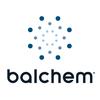Explore all the information on
Dairy cattle nutrition
Welcome to the page about Dairy cattle nutrition of Engormix; a source of knowledge on Dairy cattle nutrition.
Introduction This era may be conferred as the era of nanotechnology due to the use of nanoparticles in diversified purposes such as in the fields of medicine, engineering, information, environmental technology [1,2], pigments, food, electronics appliances [3], biological, and pharmaceutical applications [4,5], etc. Nanomaterials are also used in the fields of biology (molecular and cellular), biotechnology, mineral nutrition, physiology, reproduction, pharmacology, etc., in both...
Comments : 2
Recommendations: 0
Introduction Precision nutrition means diets are formulated as close as possible to requirements while avoiding any deficiency issues. Benefits of precision mineral nutrition can include reduced diet costs, reduced environmental impact, and reduced risk of toxicity. The major problem with precision mineral nutrition is increased risk of deficiency. Deficiency can be manifested as a clinical deficiency (e.g., grass tetany caused by inadequate magnesium), or as numerous subclinical...
Comments : 2
Recommendations: 3
Dr. Claudia Parys shares insights on the mechanisms behind improved amino acid balance, microbial protein synthesis, and metabolic resilience, highlighting BoruCare® Capsin's role in advancing sustainable dairy production ...
Comments : 0
Recommendations: 0
Dr. Claudia Parys, responsible for the ruminant portfolio at Evonik Animal Nutrition, shares the inspiration behind developing a natural, capsaicinoid-rich solution designed to improve nutrient supply and milk production in lactating dairy cows. She also explains how this approach differs from traditional nutritional products and its unique benefits for dairy farming.
...
Comments : 0
Recommendations: 0
A cow’s biology and genetics set the stage for her milk production potential. Thanks to genomics, the pace of genetic progress has accelerated in recent years, pushing that potential ever higher. But are we feeding cows to match it? Today’s dairy cows can achieve more with better nutrition, yet their ability to physically consume enough nutrients lags behind their rising requirements. ...
Comments : 0
Recommendations: 0
Spotlight: “Encapsulated nutrients can provide consistent, reliable and cost-effective alternatives to traditional feedstuffs. However, how well these products perform in terms of durability, rumen stability, intestinal release and, ultimately, cow performance vary depending on the encapsulation and manufacturing process utilized. Thus, it is critical that in situ , in vitro and in vivo research be used to evaluate an encapsulate’ s performance in...
Comments : 0
Recommendations: 0
Introduction : Choline is essentially a required nutrient for all dairy cows, with proven benefits on metabolic health, milk production, colostrum yield, and calf vitality. It offers a proven solution to help cows transition smoothly and boost productivity. Discover how this innovation benefits both herds and profitability. The Power of ReaShure®-XC Precision Release Choline - Choline has long been recognized as a critical nutrient for dairy cows, particularly...
Comments : 0
Recommendations: 0
Spotlight: “The interaction between lysine and methionine in increasing milk fat and feed efficiency is a perfect example of why balancing for all essential amino acids is so important. In an ideal world, we could provide exactly the required amount of essential amino acids, but this is difficult with only rumen protected forms of lysine and methionine currently available in the market. In this case, if we only balance for lysine or methionine instead of both, we could be missing out...
Comments : 0
Recommendations: 0
Balchem Animal Nutrition & Health successfully concluded its European seminar series in the UK and Italy, welcoming more than 300 participants from 19 countries across Europe and the Middle East. The events featured top international speakers and...
Comments : 0
Recommendations: 0
There is no question that the ongoing narrative concerning climate change and various “man-induced” gas emissions (including ammonia, carbon dioxide, methane and nitrous oxide) includes dairy production. While many producers (and others involved in agriculture) may not agree with the significance or level of gas contributions of agriculture to the total production, that disagreement may be somewhat irrelevant. The discussion, social media uproar, political activism and...
Comments : 3
Recommendations: 1
Dr. Parag Ghogale, a Ruminant Nutritionist with 20+ years of experience, explores key challenges in India's dairy industry and shares strategies to boost productivity, improve breeding, and optimize nutrition for sustainable growth.
...
Comments : 1
Recommendations: 1
Marcos Zenobi, Technical Services Manager at Balchem Latin America, outlines key shifts in amino acid requirements from prepartum to peak milk production in high-yielding dairy cows. He also shares field data showing the economic return of using protected amino acids. A focused look at nutritional efficiency with measurable impact. ...
Comments : 1
Recommendations: 0
New natural product for dairy cows based on red chili pepper
• Jointly developed with French company Heidi Botanicals
• BoruCare® Capsin increases milk yield in stressful phases
With a new, natural product rich in capsaicinoids, polyphenols, and flavonoids,...
Comments : 0
Recommendations: 0
Exclusive events held in the United Kingdom and Italy in September 2025
– The Balchem Animal Nutrition & Health team is hosting two exclusive...
Comments : 0
Recommendations: 0
...
Comments : 2
Recommendations: 1
Dr. Tom Overton of Cornell University presented “Turbocharge Your Fresh Cow Diets” at the 2025 Florida Ruminant Nutrition Symposium Mini-Symposium. His session explored nutritional strategies to enhance performance, health, and metabolic efficiency in early lactation cows. ...
Comments : 0
Recommendations: 0
Dr. Clay Zimmerman of Balchem presented “AminoShure-XL: Redefining Amino Acid Nutrition” at the 2025 Florida Ruminant Nutrition Symposium Mini-Symposium. His talk focused on advancements in rumen-protected lysine and its role in optimizing dairy cow performance through precision amino acid nutrition. ...
Comments : 0
Recommendations: 0
Dr. Albert DeVries, University of Florida, shared key insights on economic decision-making in beef-on-dairy systems during the 2025 Florida Ruminant Nutrition Symposium. ...
Comments : 0
Recommendations: 0
Marcos Zenobi, Technical Services Manager at Balchem Latin America, highlights the role of protected amino acids during the transition period in dairy cows. He explains how nutrients like protected lysine support metabolic health and boost reproductive performance in early lactation. ...
Comments : 0
Recommendations: 0
1. Introduction Dairy cows have to afford several endocrine, metabolic, reproductive, and immunological challenges during the productive cycle. These challenges are particularly pronounced during the transition period (TP), when cows experience a reduction in dry matter intake (DMI), leading to negative energy balance (NEB), lipomobilization, and body mass loss. This metabolic stress occurs alongside drastic changes in hormone concentrations, decreased blood calcium levels, and...
Comments : 0
Recommendations: 0





.jpg&w=3840&q=75)


.jpg&w=3840&q=75)












